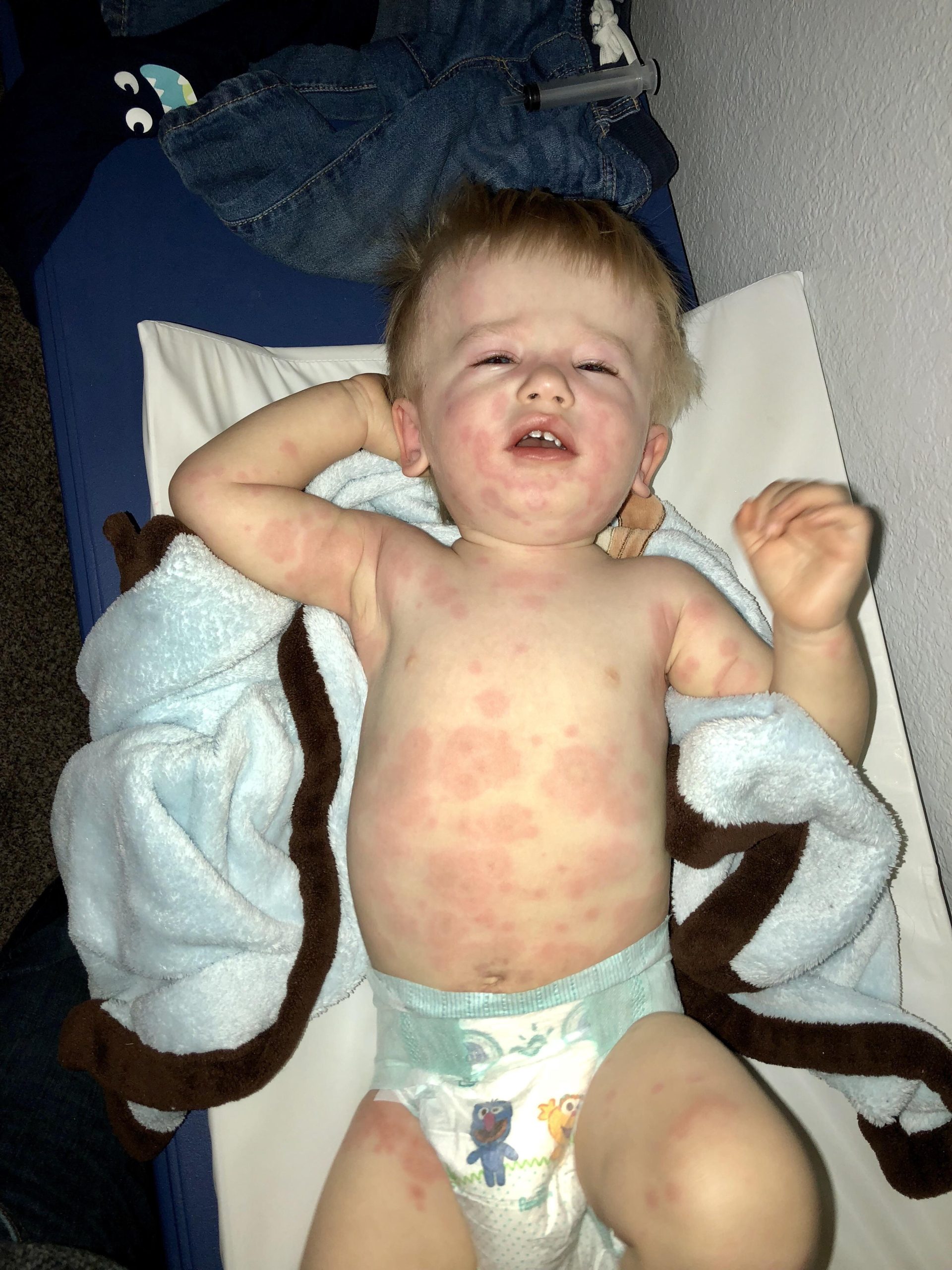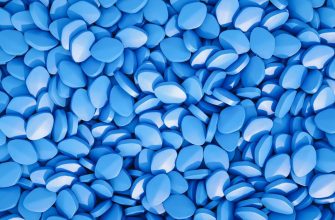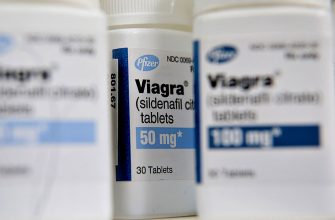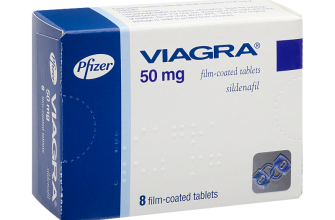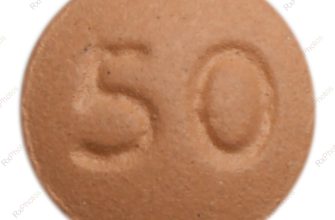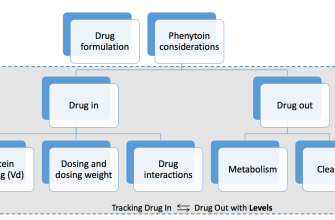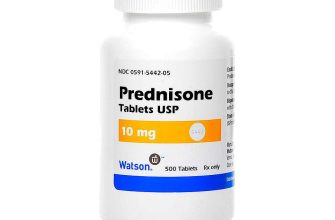If your child develops hives after taking amoxicillin, stop the medication immediately. Contact your pediatrician or other healthcare provider right away. A rapid response is crucial for managing potential allergic reactions.
Hives, or urticaria, are raised, itchy welts that appear on the skin. While sometimes a mild reaction, amoxicillin-induced hives can indicate a more serious allergy. Document the timing of the hives’ appearance relative to amoxicillin administration. Note their location, size, and any other symptoms your child experiences, such as swelling, difficulty breathing, or dizziness. This information is vital for your doctor.
Your doctor may recommend an antihistamine like diphenhydramine (Benadryl) to alleviate the hives and itching. They might also prescribe a different antibiotic to treat the underlying infection. In some cases, a follow-up appointment for allergy testing might be necessary to determine the severity of the allergy and prevent future reactions. Remember, precise details on symptoms and medication timing help your doctor assess the situation accurately and provide the best care.
- Amoxicillin Hives in Children: A Parent’s Guide
- Recognizing Amoxicillin Hives
- What to Do
- Preventing Future Reactions
- Important Note:
- Identifying Amoxicillin Hives in Children
- Differentiating Amoxicillin Hives from Other Rashes
- Immediate Actions to Take if Hives Appear
- Assess the Severity
- Call Your Doctor or 911
- Administer Benadryl (if you have it)
- Keep Your Child Comfortable
- Document Everything
- Follow Medical Advice
- When to Seek Emergency Medical Attention
- Understanding the Allergic Reaction Mechanism
- Preventing Future Amoxicillin Reactions
- Alternative Antibiotics
- Allergy Testing
- Alternative Antibiotics for Children
- Long-Term Management of Amoxicillin Allergy
- Avoiding Amoxicillin
- Managing Future Reactions
- Allergy Testing
- Medication Reference Chart
- Emergency Preparedness
Amoxicillin Hives in Children: A Parent’s Guide
See your doctor immediately if your child develops hives after taking amoxicillin. This is a serious allergic reaction requiring prompt medical attention.
Recognizing Amoxicillin Hives
Amoxicillin hives appear as raised, itchy welts on the skin. They can vary in size and location, appearing anywhere on the body. Sometimes, hives accompany other symptoms like swelling, particularly around the face, lips, or tongue (angioedema), difficulty breathing, or dizziness.
- Mild Reaction: Hives alone, without other symptoms.
- Moderate Reaction: Hives plus swelling or mild breathing difficulty.
- Severe Reaction (Anaphylaxis): Hives with significant swelling, breathing problems, dizziness, or a rapid heartbeat. This is a medical emergency requiring immediate emergency services.
What to Do
- Stop the Amoxicillin: Discontinue the medication immediately.
- Call your doctor: Describe the symptoms clearly and follow their instructions.
- Administer antihistamine (if advised by your doctor): Over-the-counter antihistamines like diphenhydramine (Benadryl) can help manage mild symptoms, but only if your doctor recommends it.
- Seek immediate medical care: If your child experiences any symptoms of anaphylaxis, call emergency services immediately (911 in the US or your local emergency number).
Preventing Future Reactions
Once a child has had an allergic reaction to amoxicillin, they should never take it again. Inform all healthcare providers about the allergy. Alternative antibiotics are available. Discuss with your doctor appropriate alternatives to manage future infections.
Important Note:
This guide provides general information. Always follow your doctor’s advice specific to your child’s situation. This information is not a substitute for professional medical care.
Identifying Amoxicillin Hives in Children
Look for raised, red welts or blotches on your child’s skin. These hives can vary in size and may appear anywhere on the body – face, arms, legs, torso, or even the scalp. They often itch intensely. Some children experience swelling alongside the hives, particularly around the eyes, lips, or throat. This swelling is a more serious sign requiring immediate medical attention.
Differentiating Amoxicillin Hives from Other Rashes
Amoxicillin hives usually appear within hours to days of starting the medication. Other rashes may have different timelines or appearances. A viral rash, for example, often involves small, flat spots, rather than raised welts. Insect bites typically present as isolated, inflamed bumps. Compare your child’s rash to pictures online to improve your understanding. However, always consult a doctor for diagnosis and treatment.
If you suspect amoxicillin is causing the hives, stop giving your child the medication immediately and contact your doctor or pediatrician. Do not attempt to treat the hives without professional guidance.
Immediate Actions to Take if Hives Appear
First, stop giving your child amoxicillin immediately. This is crucial for preventing further reaction.
Assess the Severity
Carefully examine the hives. Note their size, number, and location. Are they spreading rapidly? Is your child experiencing difficulty breathing, swelling of the face or throat (angioedema), or dizziness? These are signs of a severe allergic reaction requiring immediate medical attention.
Call Your Doctor or 911
Contact your pediatrician or allergist immediately. If your child shows signs of a severe reaction – difficulty breathing, swelling of the face or throat, or dizziness – call emergency services (911 in the US) right away. Explain the situation clearly and concisely, providing information about the amoxicillin dose and the time of administration.
Administer Benadryl (if you have it)
If you have diphenhydramine (Benadryl) at home and your doctor approves, you can give your child an age-appropriate dose. Follow the instructions on the packaging precisely. This can help manage the symptoms while waiting for medical assistance.
Keep Your Child Comfortable
Help your child stay calm and relaxed. Cool compresses might soothe itchy skin. Loose, breathable clothing can minimize irritation. Avoid scratching, as it can worsen the hives and increase the risk of infection.
Document Everything
Note the time hives appeared, the amoxicillin dosage, and any other symptoms your child exhibits. This information is invaluable for your doctor.
Follow Medical Advice
Once you receive medical advice, follow it diligently. This might involve further medication, allergy testing, or a change in treatment plan. Your child’s health is the top priority.
When to Seek Emergency Medical Attention
Call emergency services immediately if your child experiences any of the following after taking amoxicillin:
- Difficulty breathing or wheezing.
- Swelling of the face, lips, tongue, or throat.
- Severe hives covering a large area of the body.
- Lightheadedness or dizziness.
- Loss of consciousness.
Seek immediate medical attention if the hives are accompanied by:
- High fever (above 101°F or 38.3°C).
- Persistent vomiting or diarrhea.
- Severe itching or pain.
- Signs of infection, such as a spreading rash or pus-filled blisters.
These symptoms may indicate a serious allergic reaction or other complication requiring prompt medical care. Don’t hesitate to contact a doctor or go to the emergency room if you have any concerns about your child’s reaction to amoxicillin, even if the symptoms seem mild. Early intervention can prevent serious problems.
Remember to always inform medical professionals about all medications your child is taking.
- Note the time of onset of symptoms.
- Describe the symptoms clearly to medical staff.
- Bring the amoxicillin bottle to the appointment.
Understanding the Allergic Reaction Mechanism
Amoxicillin hives in children result from the body’s immune system mistakenly identifying amoxicillin as a threat. This triggers a cascade of events.
First, amoxicillin molecules bind to specific immune cells. This binding activates these cells, causing them to release histamine and other inflammatory chemicals.
Histamine increases blood flow to the skin, leading to swelling and redness (inflammation). This is why you see hives – raised, itchy welts on the skin.
Other inflammatory chemicals contribute to the itching and, in more severe cases, can cause difficulty breathing or swelling of the throat (angioedema), requiring immediate medical attention.
The severity of the reaction depends on factors like the dose of amoxicillin, the child’s sensitivity, and prior exposure to penicillin-type antibiotics.
If your child experiences hives after taking amoxicillin, discontinue the medication immediately and seek medical advice. A doctor can assess the severity and recommend appropriate treatment, which might include antihistamines or, in severe cases, epinephrine.
Always inform your doctor about any past allergic reactions before starting any new medication.
Preventing Future Amoxicillin Reactions
Avoid amoxicillin completely. This is the most reliable way to prevent future reactions. Discuss alternative antibiotics with your child’s doctor.
Alternative Antibiotics
Your doctor can prescribe a different antibiotic, such as cephalexin or azithromycin, depending on your child’s infection. Always inform your doctor of past allergic reactions before starting any new medication.
Allergy Testing
Consider allergy testing. This can pinpoint the specific allergen causing the reaction, clarifying whether it’s amoxicillin itself or a related penicillin. This provides accurate information for future medication choices.
Carry an epinephrine auto-injector (like an EpiPen) if your child has a severe allergy. Learn how to use it correctly with your doctor or pharmacist. Prompt administration is crucial in emergencies.
Inform all healthcare providers about your child’s amoxicillin allergy. Wear a medical alert bracelet or necklace to clearly display this information. This prevents accidental exposure.
Alternative Antibiotics for Children
If your child experiences amoxicillin hives, your doctor might consider Cephalexin (Keflex) as a suitable alternative. This is a first-generation cephalosporin often used for similar infections.
Another option is Cefuroxime (Ceftin), a second-generation cephalosporin, which often proves effective against a broader range of bacteria. It’s generally well-tolerated by children.
For severe infections or penicillin allergies, Azithromycin (Zithromax) or Clarithromycin (Biaxin), macrolides, may be prescribed. Remember to discuss potential drug interactions with your doctor.
Clindamycin is another alternative, particularly useful for certain types of bacterial infections. However, it’s less frequently used in children due to potential side effects. Your doctor will assess its suitability for your child’s specific condition.
Always discuss antibiotic options with your pediatrician. They will consider your child’s age, medical history, and the specific infection to determine the safest and most appropriate treatment.
Long-Term Management of Amoxicillin Allergy
Always carry an epinephrine auto-injector (like an EpiPen) if your child has experienced a severe allergic reaction to amoxicillin. This is crucial for immediate treatment in case of future exposure.
Maintain a detailed allergy record, including the date of the reaction, symptoms experienced, and treatment received. Share this information with your child’s pediatrician, allergist, and anyone who provides your child with medical care.
Inform all healthcare providers, including dentists and other specialists, about your child’s amoxicillin allergy. Wear a medical alert bracelet or necklace clearly stating the allergy.
Avoiding Amoxicillin
Strictly avoid all medications containing amoxicillin or related penicillin antibiotics. Read medication labels carefully, as amoxicillin can be found in combination drugs.
Discuss alternative antibiotics with your doctor. Many effective alternatives exist, and your child’s medical history will guide the best choice.
Managing Future Reactions
Learn to recognize symptoms of an allergic reaction, ranging from mild hives to severe anaphylaxis. Promptly seek medical attention if your child experiences any allergic symptoms after potential exposure.
Allergy Testing
Consider allergy testing to determine the severity and specificity of your child’s allergy. This can help guide future medication choices and inform management strategies. Your allergist can explain the procedure and potential results.
Medication Reference Chart
| Medication Type | Alternative Options | Notes |
|---|---|---|
| Penicillin Antibiotics | Cephalosporins (e.g., cefdinir), Macrolides (e.g., azithromycin), Fluoroquinolones (e.g., levofloxacin) | Always consult a doctor for appropriate antibiotic selection. |
| Over-the-counter cold medication | Check labels for amoxicillin or penicillin. Consider alternatives. | Many over-the-counter medications contain these ingredients. |
Emergency Preparedness
Develop an emergency action plan. This plan should detail steps to take in case of an allergic reaction, including administering epinephrine and contacting emergency services.
Regularly check the expiration dates on your epinephrine auto-injector and replace as needed.

